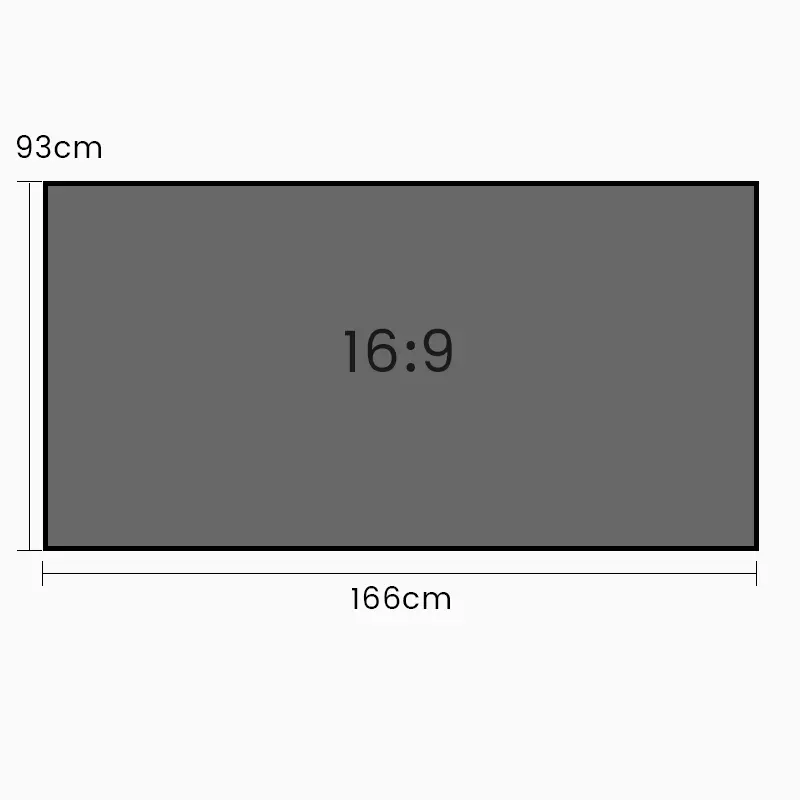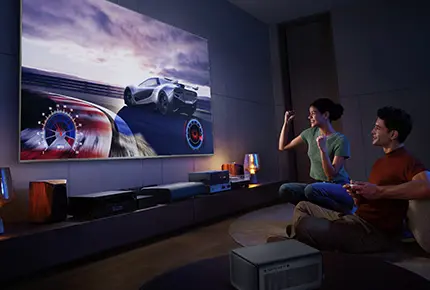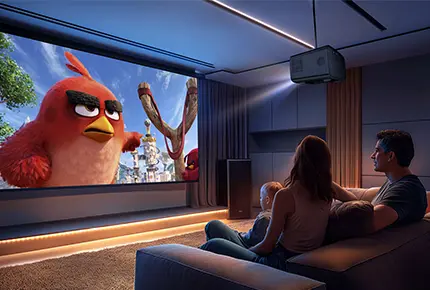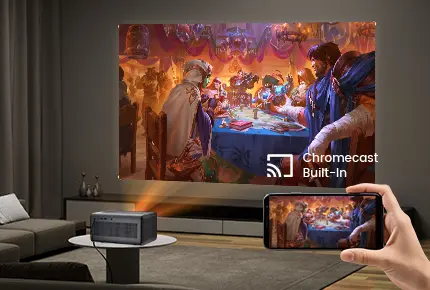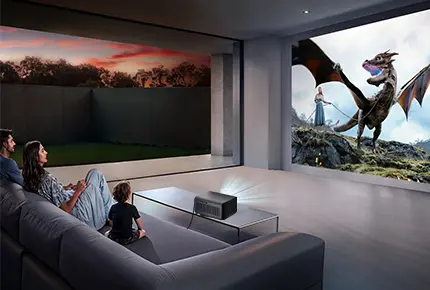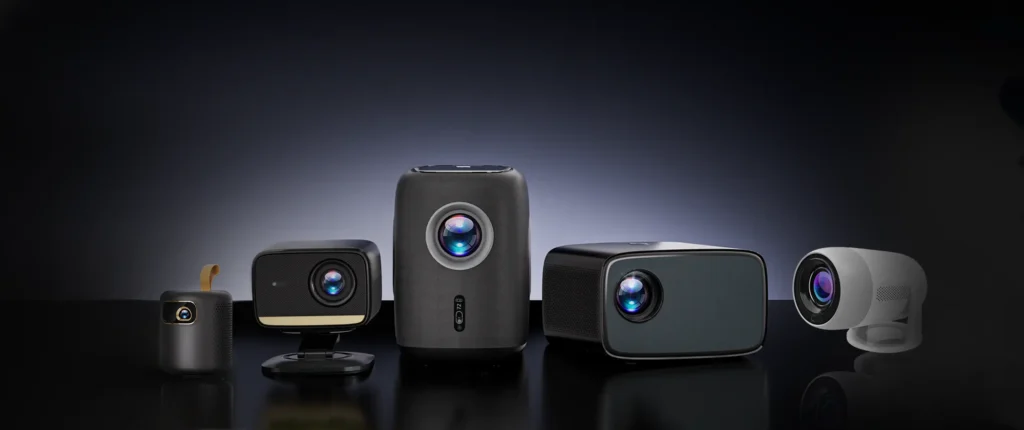
Why Lumens Are Important When Choosing a Projectors?
The key factor that values a projector’s brightness is luminous flux, which is measured in lumens. The higher the lumen value, the brighter the projected image.
The required lumen level for outdoor projectors mainly depends on the ambient light, projection area, and other influencing factors.
Here’s a general guideline for different outdoor environments:
Projector brightness should be selected based on outdoor light conditions.
Dark Night Outdoor Environment:
When projecting in a dark outdoor setting, such as an open-air cinema at night, a projector withless than 1000 lumens is typically sufficient. A portable projector is usually adequate for this use case.
Recommend Koonew portable smart projectors: A-1363G, A-2341G
Cloudy or Dimly Lit Conditions:
In environments with overcast skies or mild shade, a projector with 1000 to 2000 lumens is recommended for better visibility. Such as Koonew smart projector K-100A
Moderate Ambient Light (Partial Sunlight):
If there is some ambient light or indirect sunlight, 2000 to 3000 lumens are recommended to maintain image clarity.
Bright or Direct Sunlight:
In bright daylight or under direct sunlight, at least 3000 lumens are needed. For better visibility and a sharper image, 4000 to 8000 lumens may be necessary.
How to calculate the required projector lumens based on projection area
Generally, the farther the projection distance, the more lumens are required. For example:
Short Distance (1-3m): 1000-2000 lumens (small gatherings, nighttime).
Medium Distance (3-5m): 2000-3500 lumens (larger screens, shaded areas).
Long Distance (5m+): 5000+ lumens (large outdoor events, daylight use).
How can you calculate the optimal projection area and the necessary lumen output for outdoor use?
To determine the appropriate lumen output for an outdoor projector based on projection area or screen size, several factors must be taken into account — including ambient light conditions, screen gain/material, and viewing environment.
Below is a detailed guide to help you calculate these requirements effectively.
Projection Area and Lumen Requirements
The required lumen output can be estimated using the following formula:
Lumens=Ambientllluminance (Lux) x Projection Area (㎡) ÷ Brightness Attenuation Factor
Ambient Illuminance:
Ambient illuminance refers to the general level of light present in an environment — essentially, the overall brightness of a space due to natural or artificial lighting, without focusing on any specific direction or light source.
Measured in lux (lx): 1 lux = 1 lumen per square meter.
It describes the intensity of visible light in the environment. (that would be luminous flux, measured in lumens).
It includes natural light (like sunlight through windows) and artificial light (like ceiling lights, lamps).
Examples of Ambient Illuminance Levels:
Dark/Nighttime: ~50 Lux
Shaded Outdoor (Cloudy): ~350 Lux
Bright Daylight: ~1000 Lux or more
Projection Area:
Convert screen size to square meters (e.g., 100-inch 16:9 screen ≈ 2.76 m²).
16:9 Screen Ratio: area() ≈diagonal× 1.337 × 10⁻⁴
4:3 Screen Ratio: area() ≈diagonal× 1.555 × 10⁻⁴
16:10 Screen Ratio: area() ≈diagonal× 1.345 × 10⁻⁴
Attenuation Factor: Typically 0.8 (accounts for light loss due to distance and environmental factors).
Example Calculation:
For a 100-inch screen (2.76 m²) in moderate outdoor lighting (350 Lux):
350×2.76÷0.8≈1200 lumens (minimum)
For bright daylight (1000 Lux), the requirement increases to ~3500 lumens.
Other Affecting Factors
The surface material of the projection screen also plays a significant role.
Using a white screen with a high reflectance rate can enhance perceived brightness, while dark screens or ordinary wall surfaces will reduce brightness performance.
Content type also matters: text presentations usually require higher brightness than video content to remain clear and readable.
So, how many lumens are needed for an outdoor projector?
It depends on many complex factors, with ambient light and projection area (screen size) being the most important.

